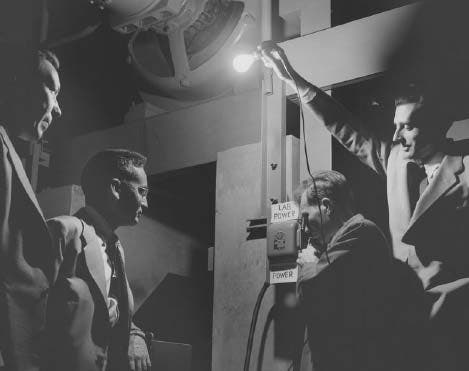Crossroads of Peace
1946-1960
With the world no longer at war, nuclear research moves out of military control into civilian management. Nuclear weapons testing proliferates at the same time as developments are made in medical applications and the generation of atomic energy.
August 1946
President Harry S. Truman signed the Atomic Energy Act into law. The Act transferred nuclear research and development from the Army to civilian control under the Atomic Energy Commission. The nuclear research and production facilities of the Manhattan Project transferred to the AEC on January 1, 1947.
December 1951
An experimental reactor near Arco, Idaho, produced the first electricity from nuclear energy. The reactor, designed and built at Argonne National Laboratory and known as Experimental Breeder Reactor I, generated enough electricity to light four light bulbs.
February 1953
Scientists at Oak Ridge National Laboratory successfully operated an experimental homogeneous reactor to generate one megawatt of power.
December 1953
President Dwight D. Eisenhower delivered his “Atoms for Peace” speech before the United Nations General Assembly. Eisenhower proposed an international agency to promote peaceful applications of nuclear energy and the loan of enriched uranium for peaceful applications to non-nuclear countries.
December 1957
The first large-scale commercial nuclear power plant in the U.S. went online in Shippingport, Pennsylvania, 25 miles northwest of Pittsburgh. The plant utilized a pressurized light water reactor originally designed for the navy’s first nuclear submarines.

